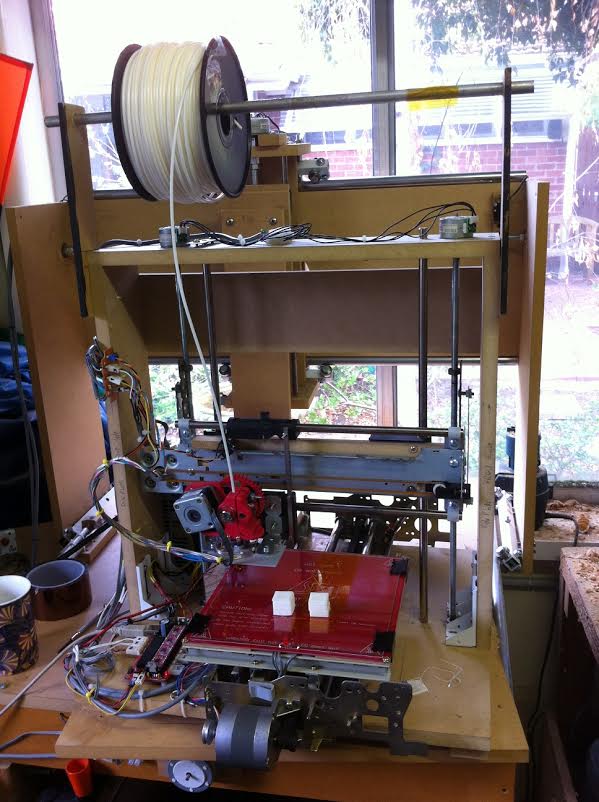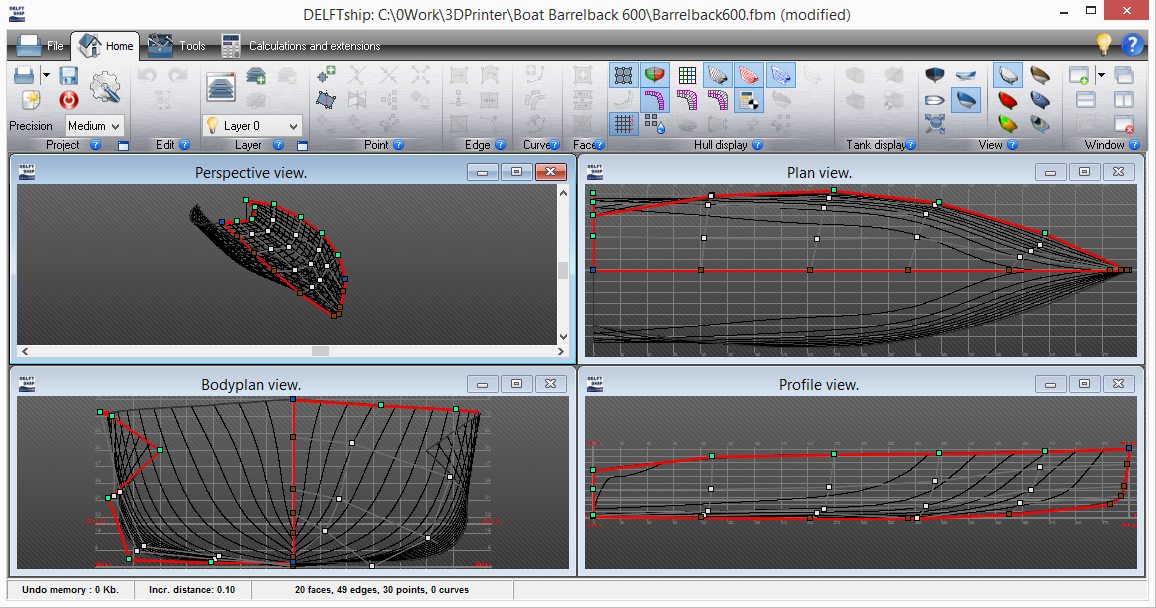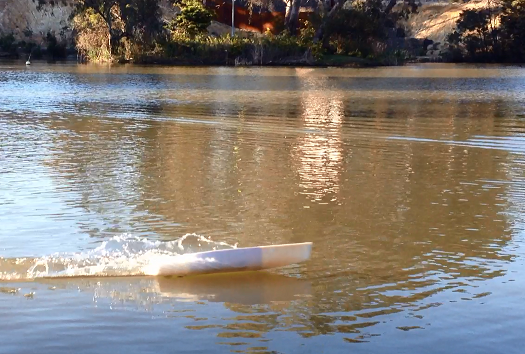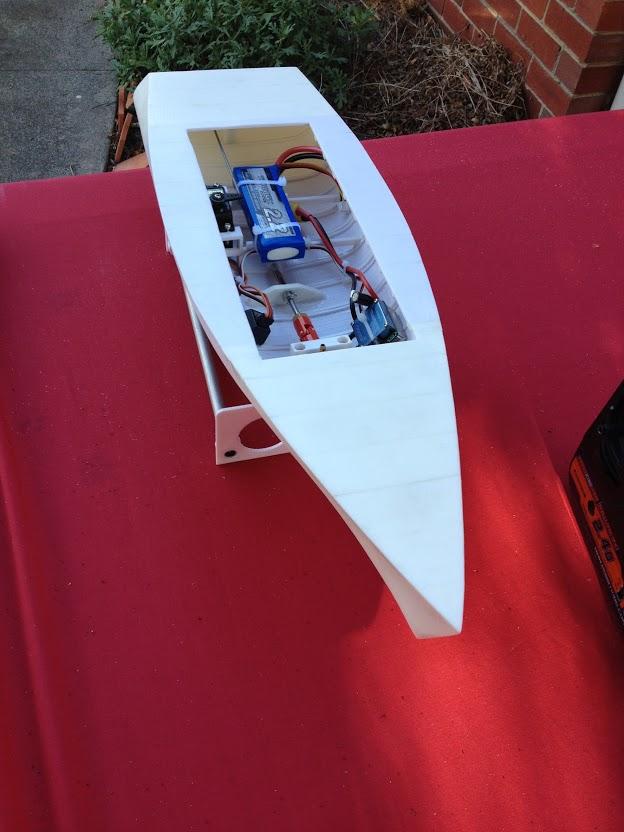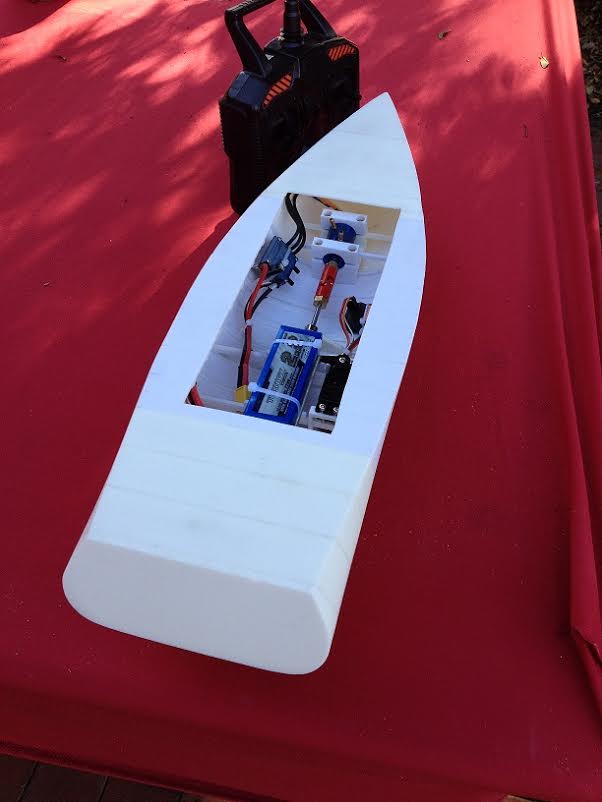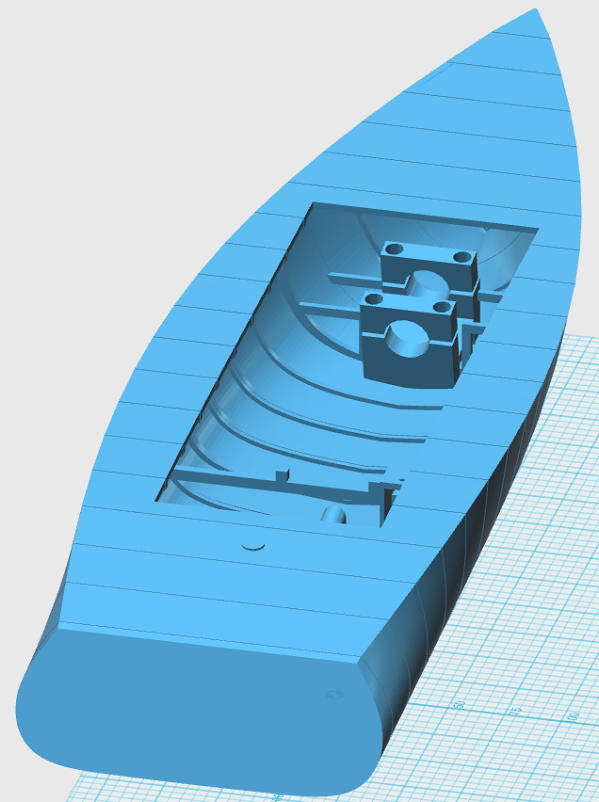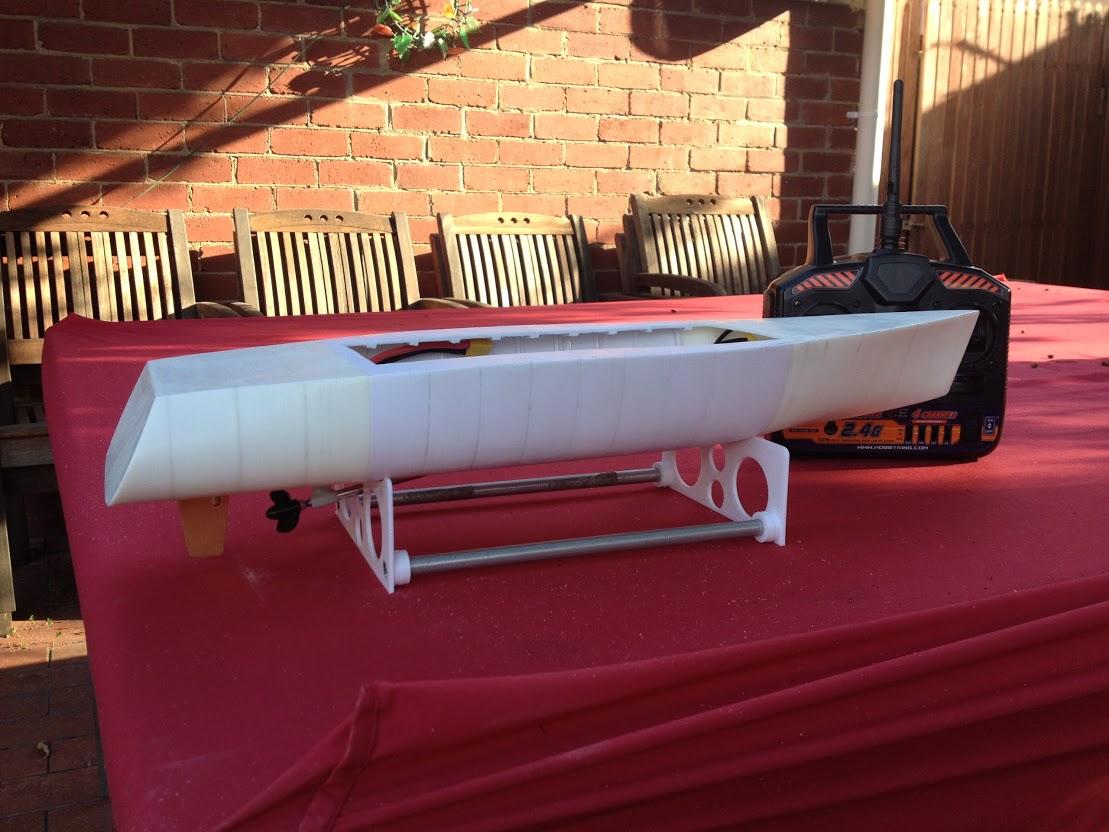 We have seen a lot of creativity coming from DIY at-home 3D printing enthusiasts. We have seen many very unique 3D printers fabricated by designers in the comfort of their own homes, but we haven’t seen anything like what John Semmens decided to do. He wasn’t satisfied with merely building his own 3D printer out of MDF (medium-density fiberboard) and components from old 2D dot matrix printers. He wanted to use that printer to create something that we don’t see very often, a 3D printed RC boat.
We have seen a lot of creativity coming from DIY at-home 3D printing enthusiasts. We have seen many very unique 3D printers fabricated by designers in the comfort of their own homes, but we haven’t seen anything like what John Semmens decided to do. He wasn’t satisfied with merely building his own 3D printer out of MDF (medium-density fiberboard) and components from old 2D dot matrix printers. He wanted to use that printer to create something that we don’t see very often, a 3D printed RC boat.
“I decided to use 3D printing as the method of construction because that would yield the most direct path from a boat design in a computer through to a functioning model,” Semmens told 3DPrint.com. “It would also mean the accuracy of the resulting model would be much greater than my patience would allow using more traditional construction methods. My aim was to learn the practical problems and solutions to designing a hull using ship design software and then progressing through to a printable model. The boat was not built for competition, just for fun.”
In order to design the boat, Semmens used a free hull design software package called DELFTship. The sections of the hull were then exported to DXF files, before being processed using a program that Semmens wrote himself, to convert them to SVG files. The SVG files were then imported into Autodesk 123D Design. “Autodesk 123D Design imports SVG files as sketches which can be ‘lofted’ into the solid hull,” Semmens told us. “The hull sections can be “shelled” to the desired thickness to create the printable solids. This requires a lot of coaxing to work correctly, but with patience, it can be done.”
Semmens shelled the hull section to a thickness of 3mm, and broke the entire hull up into 20 separate parts, so that the entire 600mm long boat could be printed on his 3D printer which has a 200mm x 200mm print bed. Each printed section represented 30mm of the hull, which was then assembled via a rather unique welding process using an ABS/Acetone mixture, to basically glue the pieces together.
“The interior of the hull was mostly fitted out within 123D Design,” explained Semmens. “This included adding the motor mount and clamp assembly, the servo mounting brackets, battery mounts, rudder tube and the hole for the propeller shaft. The desired propeller shaft angle of 10 degrees could easily and accurately established in the design, without the usual worry of drilling a hole accurately through the bottom of your precise boat with more traditional construction techniques.”
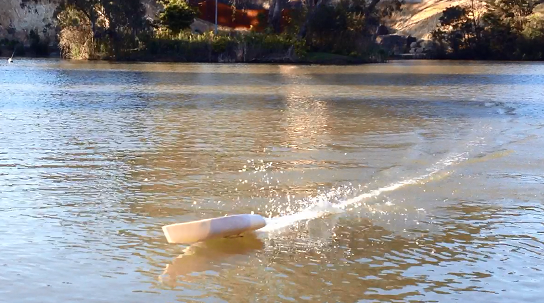 When all was said and done, the hull weighed 0.6kg empty, and about 1kg when fitted with all of its electronics. Most importantly though, it didn’t sink and it ran quite well. “ABS plastic is not a high performance material when compared to composite materials that are used in the very high speed model boats,” said Semmens. “But this has shown me that it is very practical to design fun model boats on a computer and have them realized in plastic using 3D printing in your own shed.”
When all was said and done, the hull weighed 0.6kg empty, and about 1kg when fitted with all of its electronics. Most importantly though, it didn’t sink and it ran quite well. “ABS plastic is not a high performance material when compared to composite materials that are used in the very high speed model boats,” said Semmens. “But this has shown me that it is very practical to design fun model boats on a computer and have them realized in plastic using 3D printing in your own shed.”
What do you think? Would you consider 3D printing your own RC boat on an desktop 3D printer? What do think about Semmens’ 3D printed boat? Discuss in the 3D printed RC boat forum thread on 3DPB.com. Check out some more photos below.
Subscribe to Our Email Newsletter
Stay up-to-date on all the latest news from the 3D printing industry and receive information and offers from third party vendors.
You May Also Like
Gorilla Sports GE’s First 3D Printed Titanium Cast
How do you help a gorilla with a broken arm? Sounds like the start of a bad joke a zookeeper might tell, but it’s an actual dilemma recently faced by...
Nylon 3D Printed Parts Made More Functional with Coatings & Colors
Parts 3D printed from polyamide (PA, Nylon) 12 using powder bed fusion (PBF) are a mainstay in the additive manufacturing (AM) industry. While post-finishing processes have improved the porosity of...
$25M to Back Sintavia’s Largest Expansion of Metal 3D Printing Capacity Since 2019
Sintavia, the digital manufacturing company specializing in mission-critical parts for strategic sectors, announced a $25 million investment to increase its production capacity, the largest expansion to its operations since 2019....
Velo3D Initiates Public Offering in a Bid to Strengthen Financial Foundations and Drive Future Growth
Velo3D (NYSE: VLD) has been among a number of publicly traded 3D printing firms that have attempted to weather the current macroeconomic climate. After posting a challenging financial report for 2023,...


